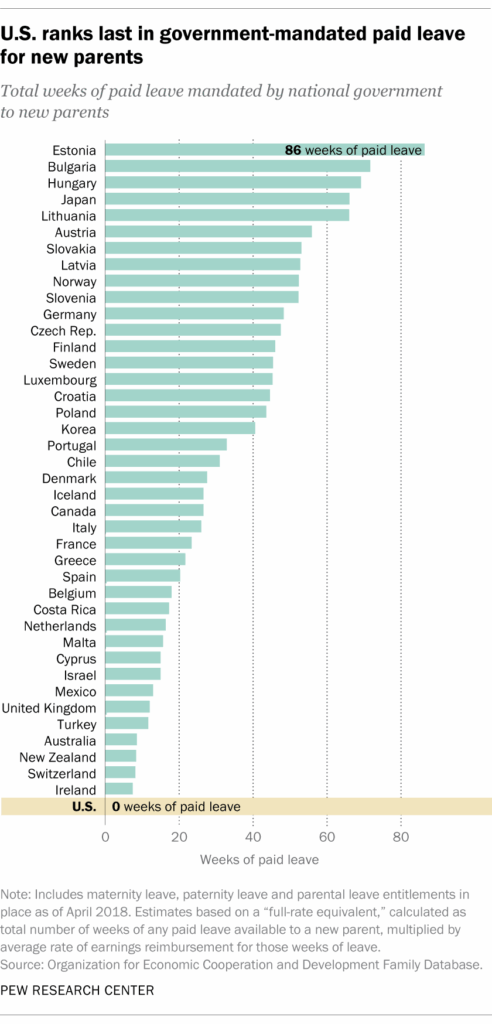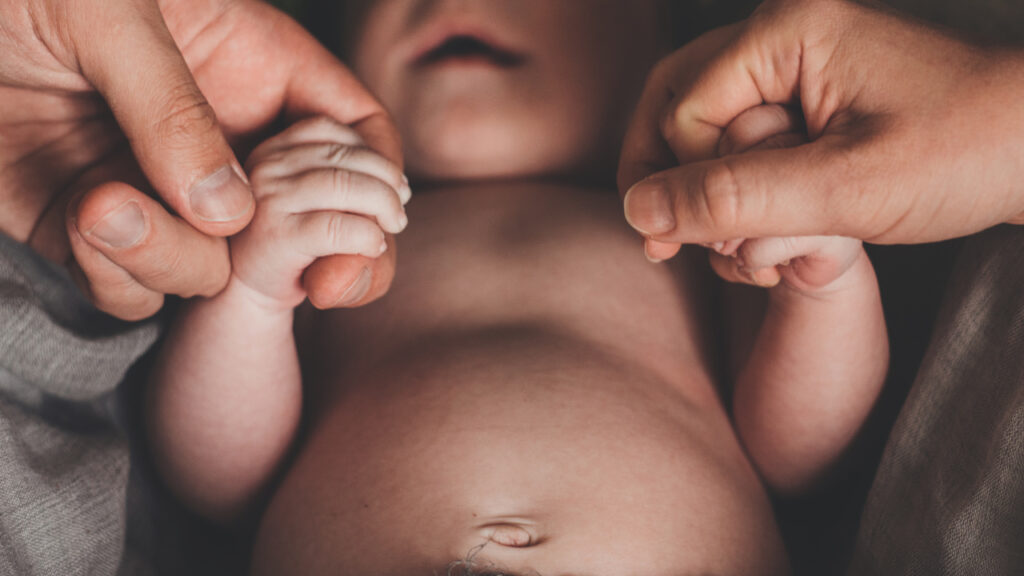The U.S. Is the Only Wealthy Country Without Paid Maternity Leave And Formula Companies Helped Keep It That Way
In 185 countries, paid maternity leave is a given. Mothers recover, breastfeed, and bond with their newborns without the added stress of losing their income. In the United States, new parents are still forced to choose between a paycheck and caring for a child. How did one of the wealthiest nations end up as an outlier, and who benefits from keeping things this way?
The U.S. is the only wealthy country without paid maternity leave
According to the Pew Research Center, among 41 countries, the U.S. is the only one without mandated paid parental leave. The smallest leave available elsewhere is about two months, while countries like Estonia offer more than a year and a half. Several nations, including Japan, Norway, and Slovenia, provide a full year or more.
Globally, the average length of guaranteed paid maternity leave is 29 weeks. The United States offers zero. Instead, the 1993 Family and Medical Leave Act (FMLA) gives some workers up to 12 weeks of unpaid leave, but nearly 40% of workers don’t qualify, including many part-time and low-wage employees. Black and Latina mothers are least likely to have employer-provided leave, which deepens inequality. These facts were also highlighted in the Hear Her Stories and My Voice My Choice post on Instagram that first drew attention to the issue.
Why post-war politics shaped American family leave policies
The U.S. didn’t always have to be last. The groundwork for national paid maternity leave was laid as early as 1919, when the International Labour Organisation adopted a policy of 12 weeks as “a medical necessity and social right,” California State University historian Mona Siegel explained to the BBC.
But after World War II, the U.S. chose a different path. While European countries saw maternity leave as part of rebuilding after massive population losses, the U.S. doubled down on individualism. Joya Misra, a professor of sociology and public policy at the University of Massachusetts, told the BBC that, unlike Europe, the U.S. “didn’t have the same kind of fears about the need to grow the population.” Instead, mothers were encouraged to return home so men could reclaim jobs.
Any attempt to frame maternity protections as healthcare or workplace rights was dismissed as “socialised medicine.” According to Siegel, this Cold War mindset made it far harder to build support for universal benefits.

How paid maternity leave connects to race and inequality
The U.S. system also reflected racism in who lawmakers considered “real” workers. Siegel told the BBC there was a “strong push” to exclude African American and immigrant women working in domestic or agricultural jobs. That mindset still lingers. In 2020, just 8% of workers in the lowest-wage jobs had access to paid leave compared to a much higher share of white-collar workers.
According to Northwestern University researchers, only 12% of low-income workers today receive paid leave. Since these workers cannot afford unpaid time off, the lack of protections perpetuates economic disparities.
Formula companies have lobbied against paid maternity leave
The story doesn’t end with cultural individualism. The formula milk industry has played an active role in keeping paid leave out of reach. According to the World Health Organization, formula companies profit when breastfeeding rates decline. Paid maternity leave makes breastfeeding possible, so the industry has spent millions lobbying against stronger protections.
The Lancet reported in 2023 that commercial milk formula manufacturers use “underhand marketing strategies” to prey on parents’ fears, turning feeding into a $55 billion global business. These companies also lobby against laws that protect breastfeeding and resist policies like extended paid maternity leave, which is directly linked to higher breastfeeding rates.
WHO researchers stressed that “actions are needed across different areas of society to better support mothers to breastfeed for as long as they want,” including guaranteed paid maternity leave.
What experts say about the public health impact of leave
The research is clear: paid leave saves lives. According to Northwestern University, studies show it reduces maternal depression, decreases infant mortality, and increases breastfeeding. UNICEF and WHO both emphasize that voluntary measures aren’t enough. Legal protections are the only way to safeguard parents and babies.
The Lancet highlighted that less than half of babies worldwide are breastfed as recommended, which contributes to economic losses of nearly $350 billion each year. Meanwhile, the formula industry continues to expand.
States step in where the federal government has failed
While the U.S. has no federal mandate, several states have acted on their own. California, New Jersey, Rhode Island, New York, Washington, and Massachusetts have implemented paid family leave programs funded through payroll taxes. According to the BBC, business owners in these states often end up supporting the policy once they see the benefits, from lower turnover to higher employee satisfaction.
Still, the patchwork of state laws leaves millions behind. As Northwestern University noted, only 21% of U.S. workers have access to paid family leave through their employers. That means most parents are left scrambling.
The U.S. is facing a policy choice on paid maternity leave
The pandemic made the crisis undeniable. More than 3 million women left the U.S. workforce, and millions more struggled with childcare and mental health. “The only way to do that [enact national policy] is to have some sort of assistance at the federal or the public level,” Villanova University’s Terri Boyer told the BBC.
Yet even with bipartisan public support—82% of Americans favor paid parental leave—political gridlock and lobbying remain obstacles. As sociologist Joya Misra put it, “Racism played a key role in how we set it up. And once it got set up, it becomes very hard to take it apart.”




